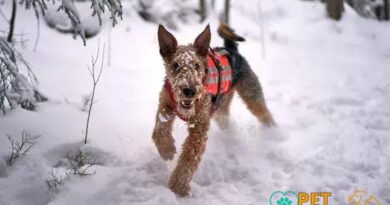O que é Peitoral
What is a Harness?
A harness is a specialized piece of equipment designed to secure a dog while providing comfort and control. Unlike traditional collars, which can put pressure on a dog’s neck, a harness distributes the force across the dog’s body, making it a safer option for walks, training, and various activities. This design is particularly beneficial for breeds that tend to pull on the leash, as it helps to prevent injury and discomfort.
Types of Dog Harnesses
There are several types of dog harnesses available, each catering to different needs and preferences. The most common types include front-clip harnesses, back-clip harnesses, and no-pull harnesses. Front-clip harnesses are ideal for dogs that pull, as they redirect their movement towards the owner. Back-clip harnesses are suitable for well-behaved dogs, while no-pull harnesses combine features to discourage pulling effectively.
Benefits of Using a Harness
Using a harness offers numerous benefits for both dogs and their owners. One significant advantage is the increased control it provides during walks, allowing owners to manage their pets more effectively. Additionally, harnesses can help prevent injuries associated with neck strain, especially for small or brachycephalic breeds. They also offer a more comfortable fit for dogs, reducing the risk of chafing or irritation.
Choosing the Right Harness
When selecting a harness, it’s essential to consider your dog’s size, breed, and specific needs. Measure your dog’s girth and neck to find the right size, and look for adjustable options to ensure a snug fit. Additionally, consider the material and design of the harness, as some may be more suitable for active dogs or specific weather conditions.
How to Properly Fit a Harness
Fitting a harness correctly is crucial for your dog’s comfort and safety. Start by placing the harness over your dog’s head and adjusting the straps to ensure a snug fit without being too tight. You should be able to fit two fingers between the harness and your dog’s body. Make sure the harness does not restrict movement or cause discomfort, and always check for any signs of chafing or irritation after use.
Training with a Harness
Training your dog to walk with a harness can take some time and patience. Begin by allowing your dog to wear the harness indoors for short periods, gradually increasing the duration. Use positive reinforcement, such as treats and praise, to encourage your dog to associate the harness with positive experiences. Once your dog is comfortable, start practicing short walks in a controlled environment before venturing out into busier areas.
Common Misconceptions about Harnesses
Many dog owners have misconceptions about harnesses, believing they are only for training or that they are less secure than collars. In reality, harnesses can be just as secure, if not more so, than collars, especially for dogs that tend to escape. Additionally, harnesses are suitable for various activities, including hiking, running, and even swimming, making them a versatile choice for active dogs.
Maintaining Your Dog’s Harness
Proper maintenance of your dog’s harness is essential to ensure its longevity and effectiveness. Regularly inspect the harness for signs of wear and tear, such as frayed straps or broken buckles. Clean the harness according to the manufacturer’s instructions, typically involving hand washing with mild detergent. Storing the harness in a cool, dry place will also help preserve its condition.
Conclusion
In summary, a harness is a valuable tool for dog owners, providing safety, comfort, and control during walks and activities. By understanding the different types of harnesses available and how to choose the right one for your dog, you can enhance your pet’s walking experience while ensuring their well-being.



